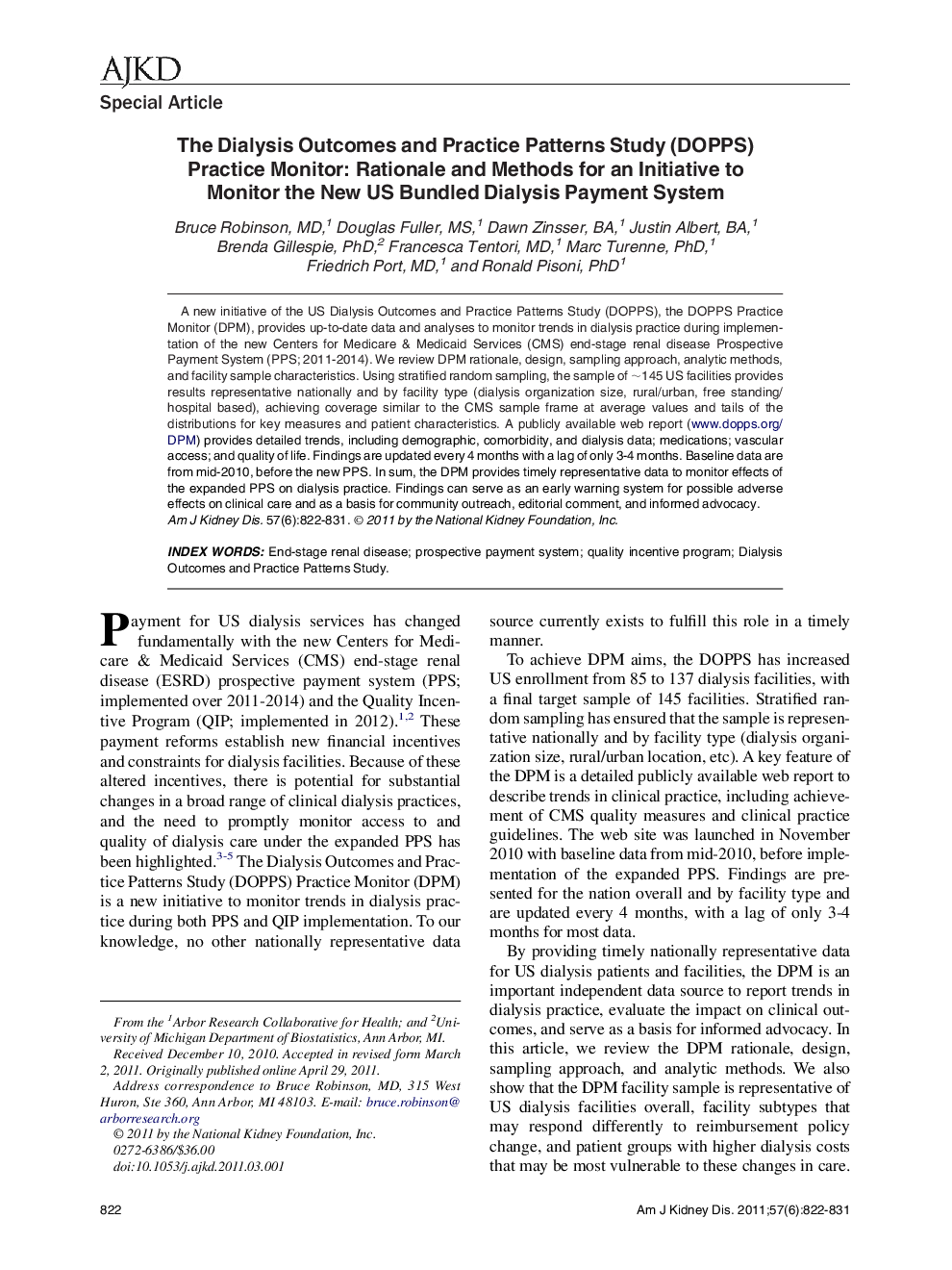| Article ID | Journal | Published Year | Pages | File Type |
|---|---|---|---|---|
| 3849329 | American Journal of Kidney Diseases | 2011 | 10 Pages |
Abstract
A new initiative of the US Dialysis Outcomes and Practice Patterns Study (DOPPS), the DOPPS Practice Monitor (DPM), provides up-to-date data and analyses to monitor trends in dialysis practice during implementation of the new Centers for Medicare & Medicaid Services (CMS) end-stage renal disease Prospective Payment System (PPS; 2011-2014). We review DPM rationale, design, sampling approach, analytic methods, and facility sample characteristics. Using stratified random sampling, the sample of â¼145 US facilities provides results representative nationally and by facility type (dialysis organization size, rural/urban, free standing/hospital based), achieving coverage similar to the CMS sample frame at average values and tails of the distributions for key measures and patient characteristics. A publicly available web report (www.dopps.org/DPM) provides detailed trends, including demographic, comorbidity, and dialysis data; medications; vascular access; and quality of life. Findings are updated every 4 months with a lag of only 3-4 months. Baseline data are from mid-2010, before the new PPS. In sum, the DPM provides timely representative data to monitor effects of the expanded PPS on dialysis practice. Findings can serve as an early warning system for possible adverse effects on clinical care and as a basis for community outreach, editorial comment, and informed advocacy.
Keywords
Related Topics
Health Sciences
Medicine and Dentistry
Nephrology
Authors
Bruce MD, Douglas MS, Dawn BA, Justin BA, Brenda PhD, Francesca MD, Marc PhD, Friedrich MD, Ronald PhD,
